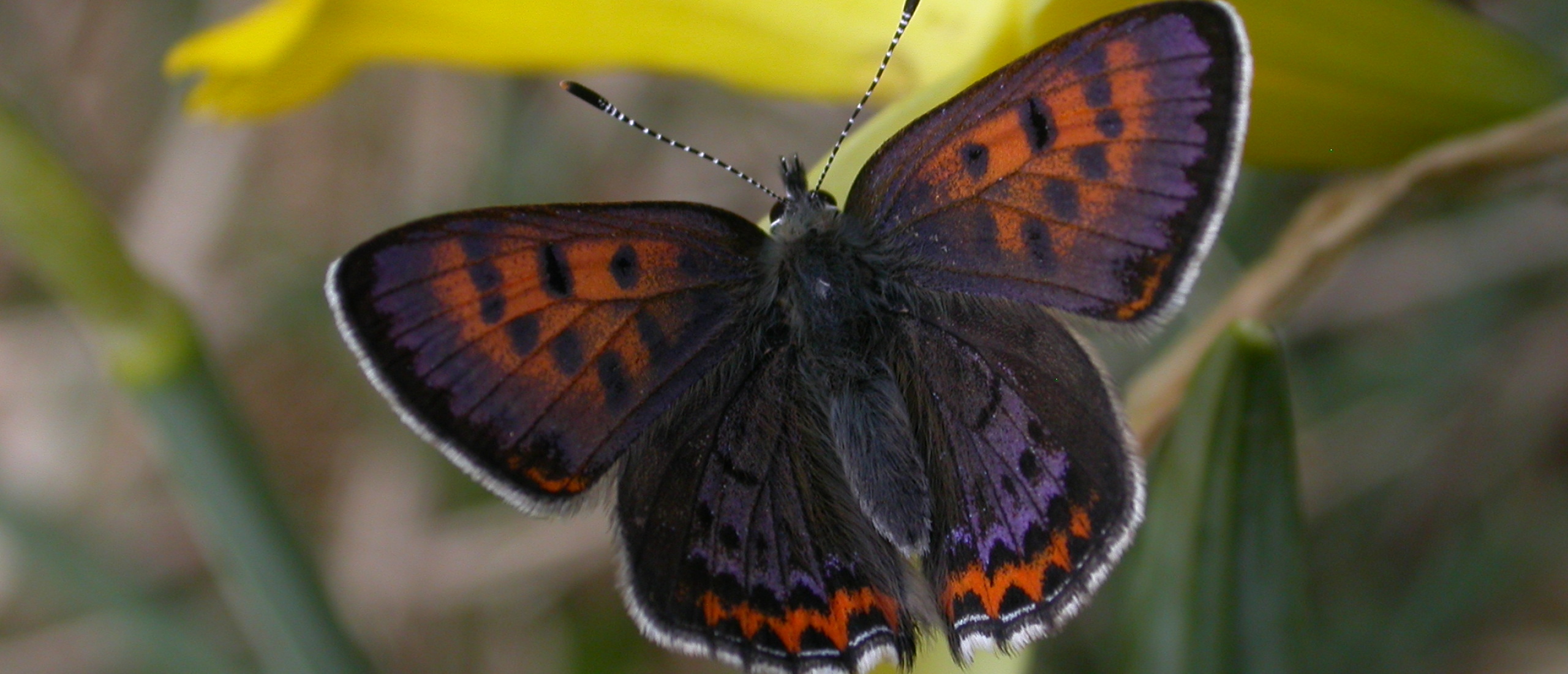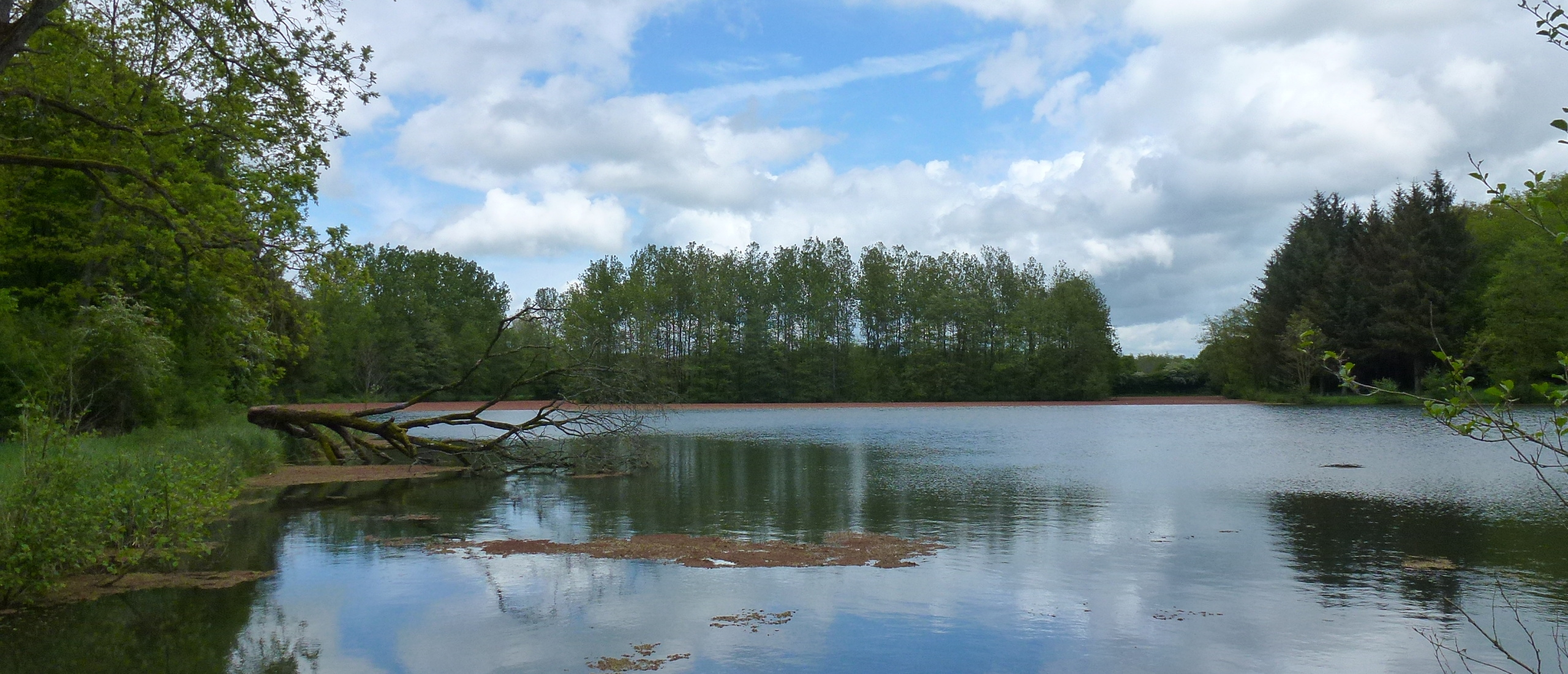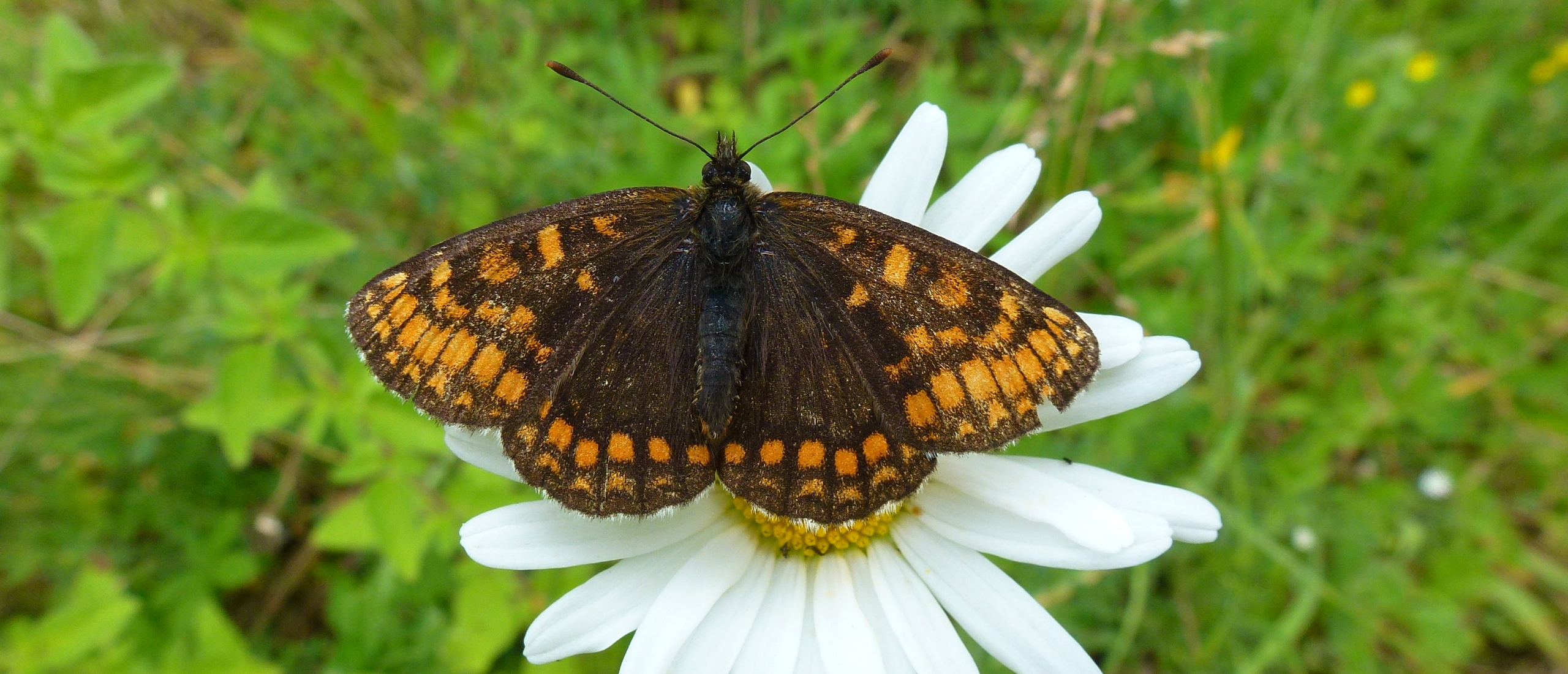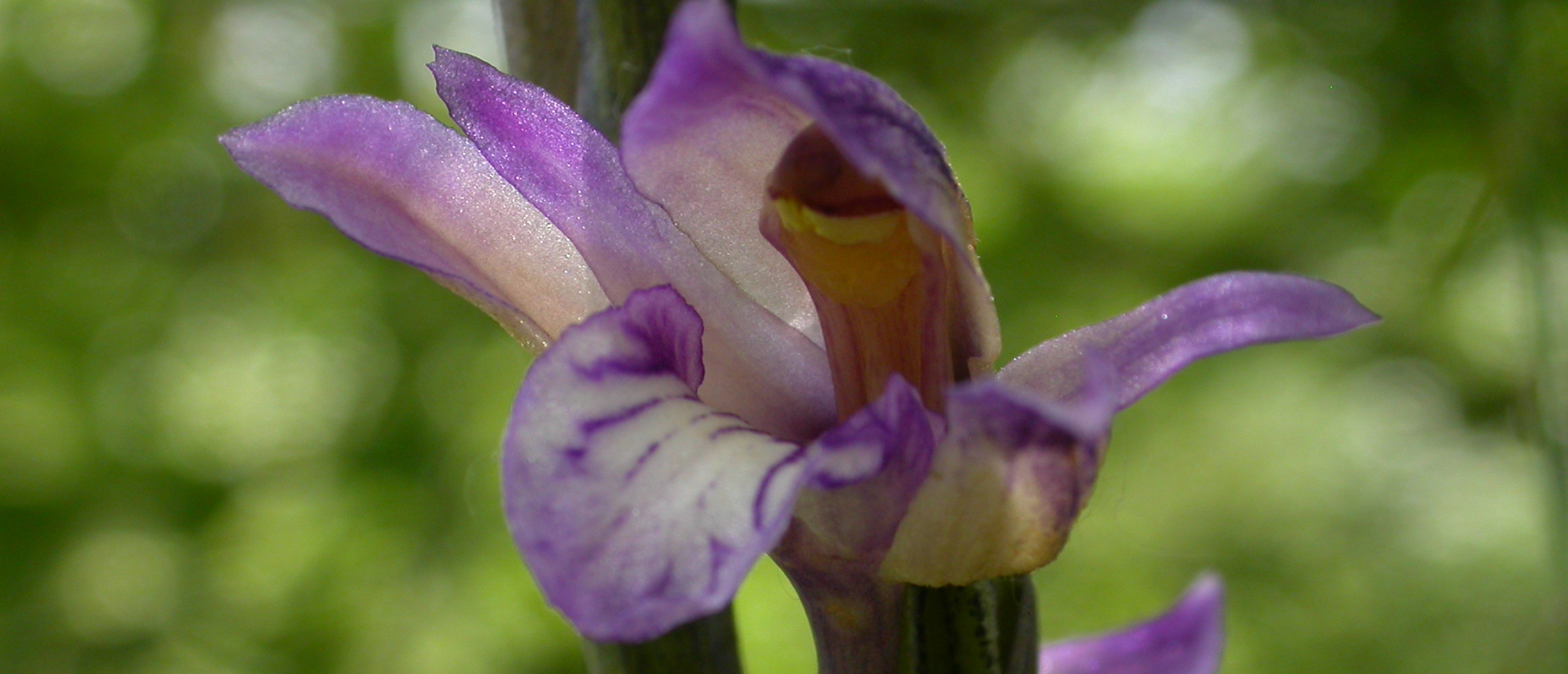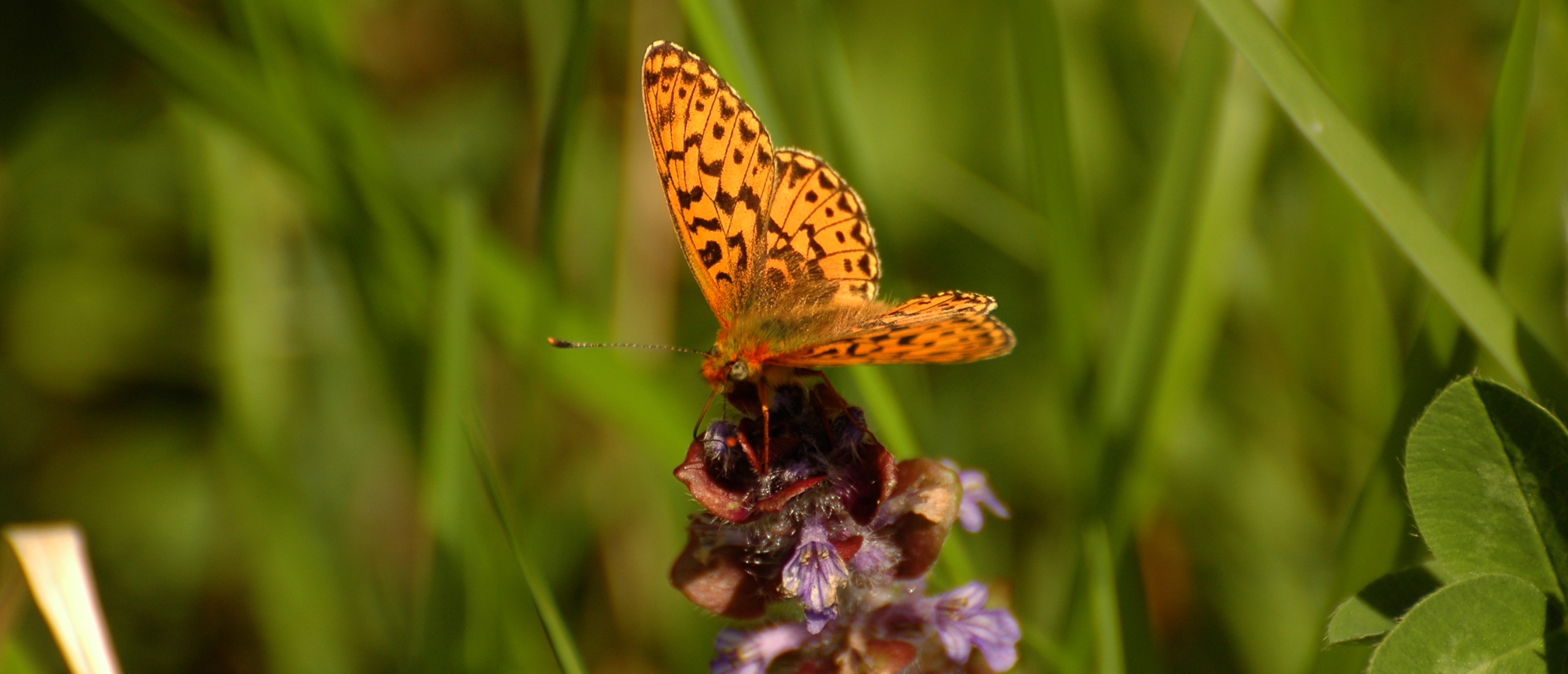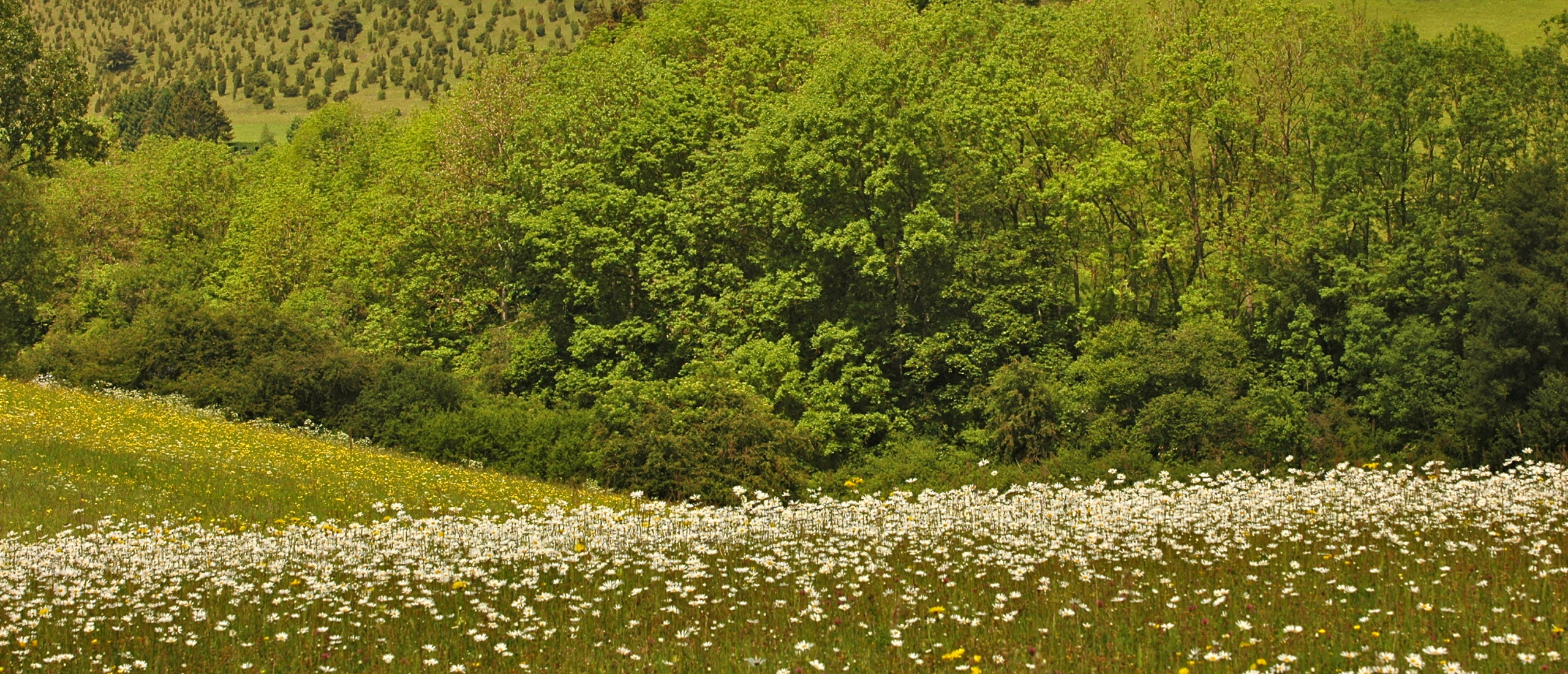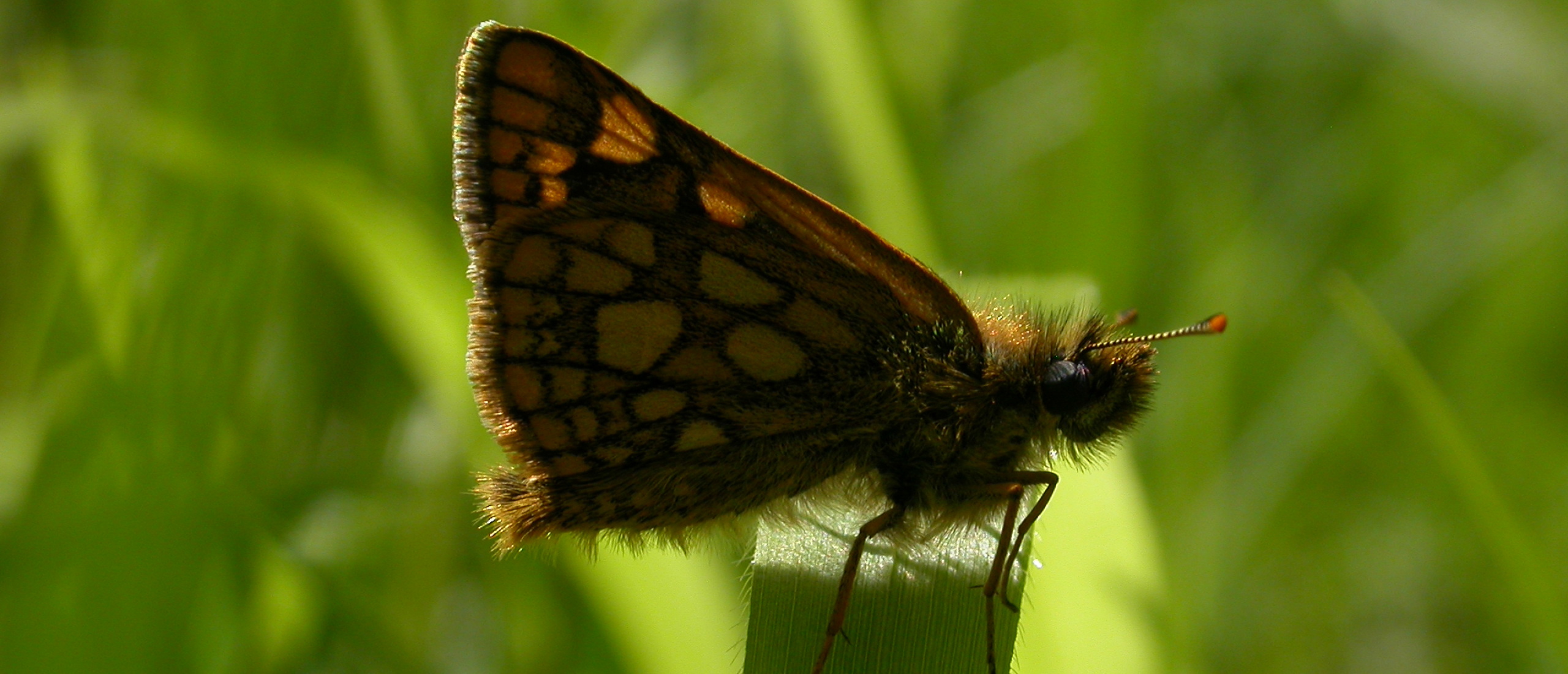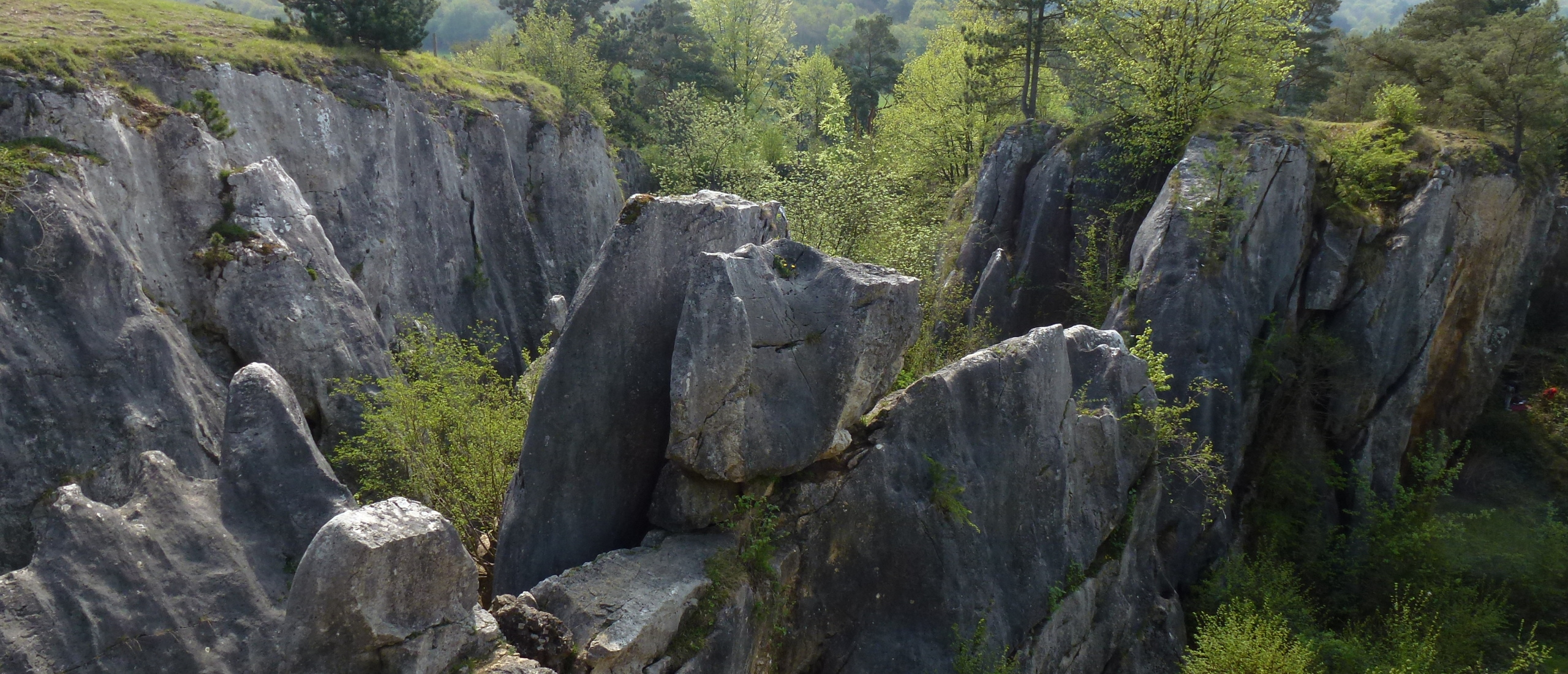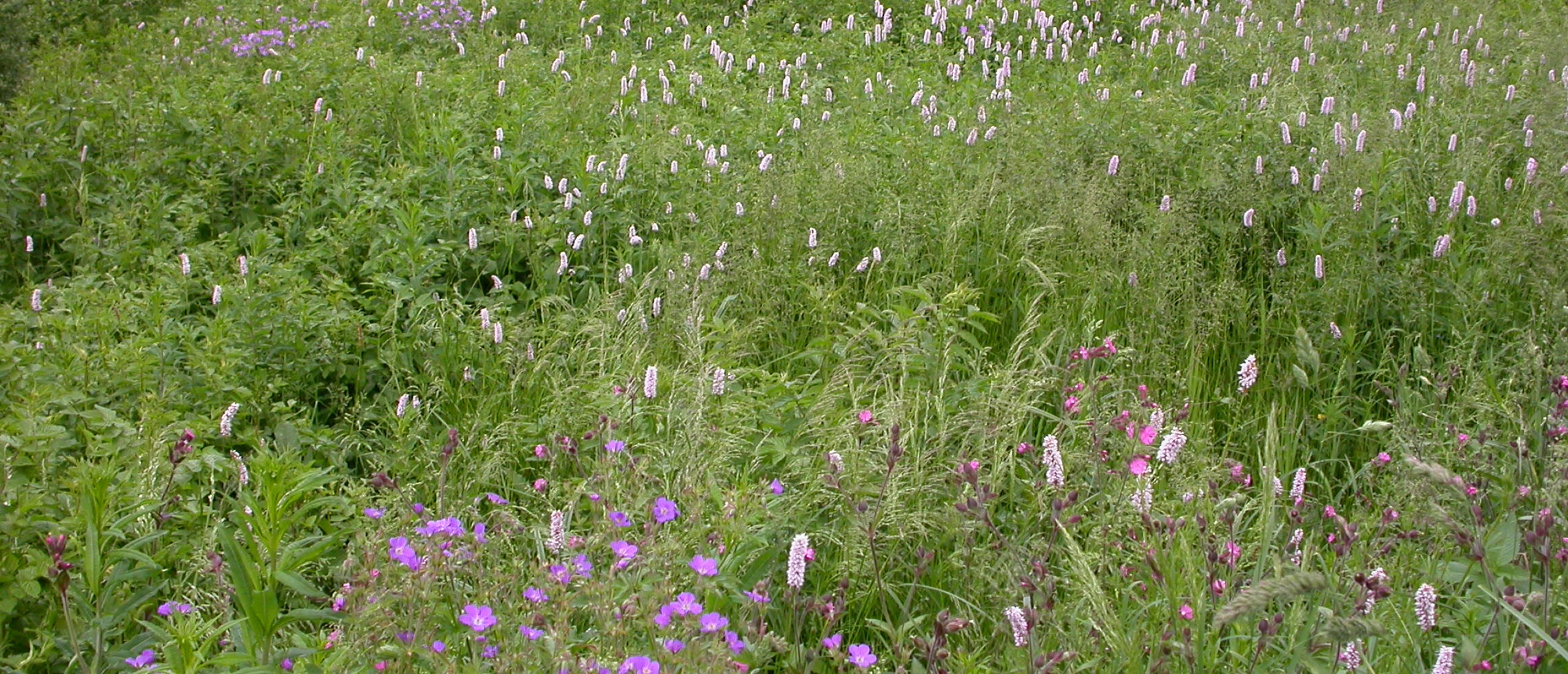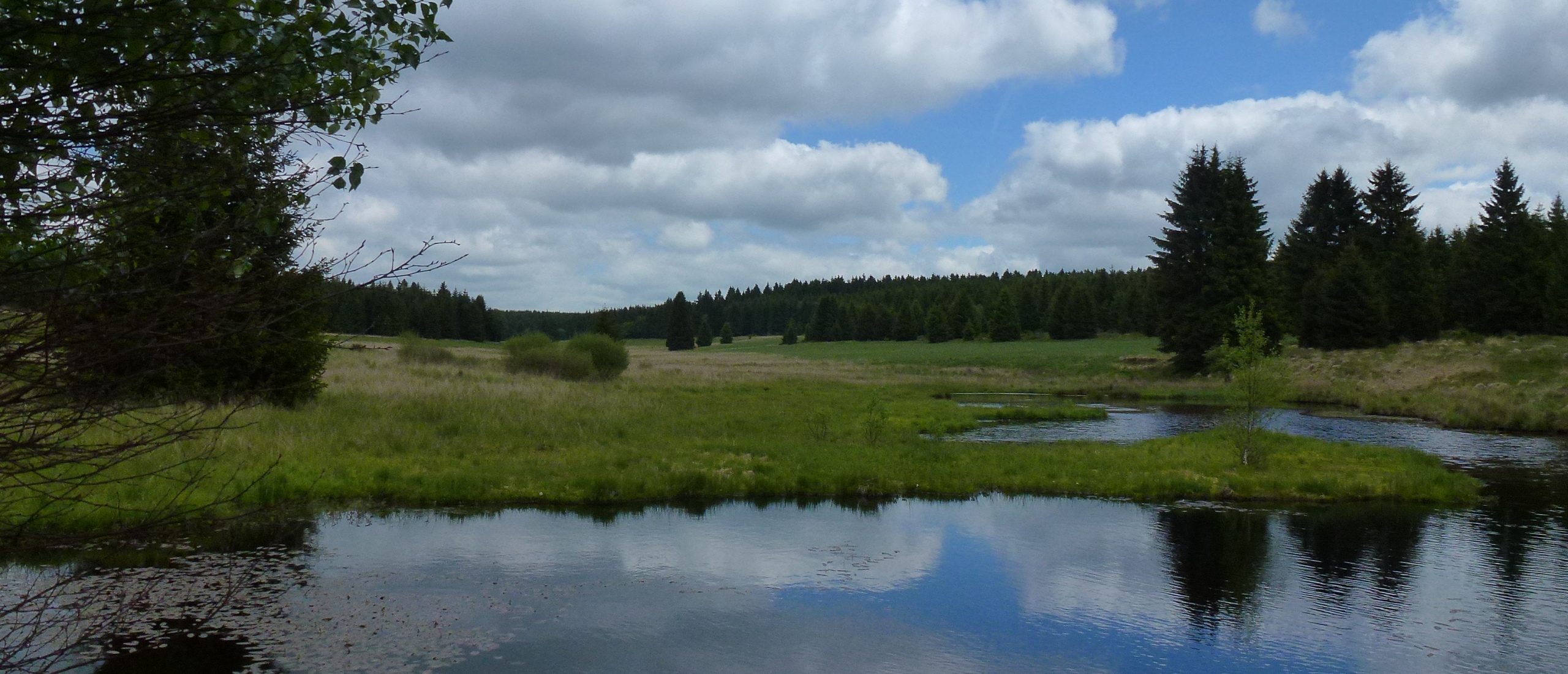
The annual bistort pilgrimage Yesterday, Friday 30th May, provided yet more proof of the immense wildlife value of military training areas. This time the location was Camp Elsenborn, a large tract of heathland, forest and boggy areas in the extreme east of Belgium. Certain parts may be entered when training is not taking place, and luckily this was the case yesterday. As with the military training areas I frequently visit in northern France, the presence of the Belgian Army here has saved the land from becoming agricultural land, and has therefore allowed the wildlife to thrive, safe from the plough and from agricultural pesticides. In addition to the butterflies I shall shortly describe, I was treated to encounters with a pair of Wrynecks, two pairs of Red-backed Shrikes, two Black Storks, a singing Woodlark, Whinchat and many Wood Warblers, all birds that survive here thanks to the camp, which has been in the possession of the military since it was set up by the Prussians in 1894.
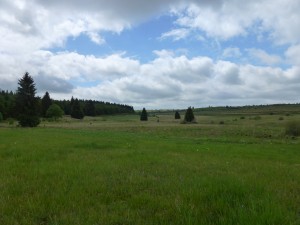 The wild landscape of Camp Elsenborn
The wild landscape of Camp Elsenborn
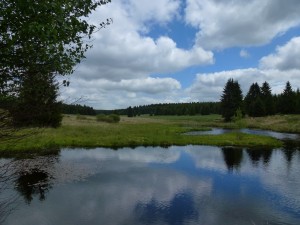 An isolated boggy pool in the military camp
An isolated boggy pool in the military camp
The weather was cold and grey initially, but finally a few breaks in the cloud appeared, followed almost immediately by the first butterflies. The first to be spotted was a Grizzled Skipper, Pyrgus malvae, which was basking with its wings wide open to catch the warming rays of the weak sun.
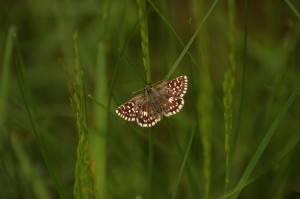 The Grizzled Skipper, almost immobile with the cold
The Grizzled Skipper, almost immobile with the cold
Shortly afterwards, the sun really began to break through, and this brought out perhaps one of my very favourite butterfly species, the diminutive and rare (but here locally abundant) Violet Copper, Lycaena helle. This beautiful species is restricted to damp areas where its larval foodplant, Bistort, Polygonum bistorta, grows. Here the pinkish spikes of bistort flowers may be seen along streams and in boggy areas, and the attendant Violet Coppers provide a beautiful spectacle as they bask on open ground or on flowerheads close by.
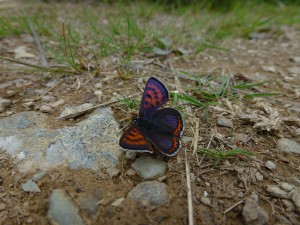 The male Violet Copper has a wonderful purplish sheen
The male Violet Copper has a wonderful purplish sheen
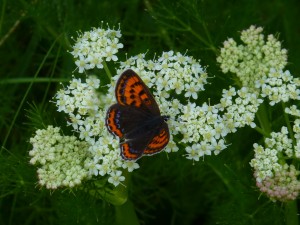 Female Violet Coppers lack the purple sheen
Female Violet Coppers lack the purple sheen
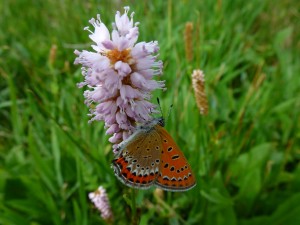 A Violet Copper nectaring on its larval foodplant, the bistort
A Violet Copper nectaring on its larval foodplant, the bistort
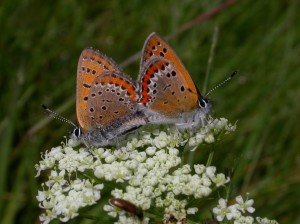 A mating pair of Violet Coppers
A mating pair of Violet Coppers
The other feature here was the delightful Chequered Skipper, Carterocephalus palaemon, which as I mentioned in my previous post, seems to be enjoying a real boom year in 2014.
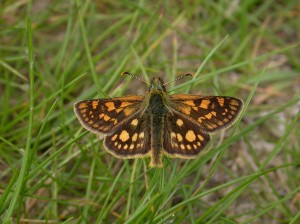 A Chequered Skipper with wings fully open to catch the sun
A Chequered Skipper with wings fully open to catch the sun
Thus far all the butterflies seen had been tiny, but it was not long before a larger, blackish butterfly appeared, a Woodland Ringlet, Erebia medusa. This species is particularly difficult to photograph, as it always seems to bury itself in long grass as soon as it lands. Luckily I was able to find at least eight individuals this time, and one did perch with its wings open for a few moments before it too obscured itself by burrowing down among the grass stems.
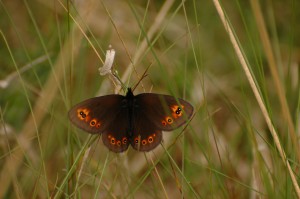 A Woodland Ringlet almost unobscured by grass stems
A Woodland Ringlet almost unobscured by grass stems
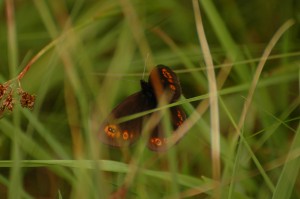 This is how Woodland Ringlets usually pose!
This is how Woodland Ringlets usually pose!
Later in the afternoon, I found myself in a more sheltered valley a short distance away, and here I was delighted to find the other bistort specialist, the Bog Fritillary, Proclossiana eunomia. I had feared that I might be too early this weekend for this species, but scanning over a patch of bistort with the binoculars revealed at least one fritillary flying, and as I plunged into the boggy vegetation, I was able to find two newly emerged individuals of this wetland specialist butterfly. Within a week or so, Bog Fritillaries will be quite numerous in these bistort-filled valleys, but it was a bonus to find two of them on this occasion.
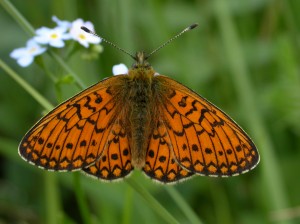 A newly emerged Bog Fritillary
A newly emerged Bog Fritillary
By the end of the day, my 2014 butterfly list had reached: 48 species.


